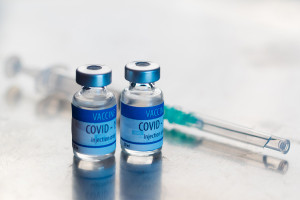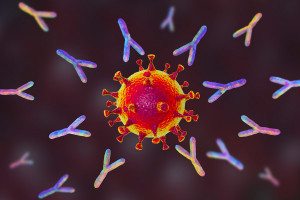B.PHL Festival Addresses Challenges to Health-Care Delivery and Maintaining Public Health Amid COVID-19
From enforcing mandatory masking to avoiding health-care employee burnout, experts explored the path forward for Philadelphia’s health-care industry beyond the pandemic.

This year, the B.PHL Innovation Festival featured a series of outdoor, socially-distant experiences in addition to virtual workshops and panel discussions. / Courtesy
In its second year, the B.PHL Innovation Festival once again attracted thousands of attendees across more than 140 events, including discussions, workshops and film screenings, and 250 diverse speakers. This time, however, the programming was delivered in a virtual setting. The annual festival attracted a global audience of more than 6,550 registered attendees spanning 30 states and 40 countries.
With the global pandemic looming over almost every aspect of life, public health became a key top of discussion among this year’s presenters. In discussions on everything from the health of millennials to racism as a public health crisis, local leaders addressed tough questions about how, in the face of new challenges, innovation can help ensure long-term improvements to health-care delivery and public health and how the city’s science and biotech sector can continue to thrive despite coronavirus-related restrictions that have brought productivity in many industries to an abrupt halt.
NextHealth PHL attended a few sessions in the festival that explored the future of Philadelphia’s health-care industry. Here’s what we learned.
Philly health-care workers face unprecedented challenges… but there are ways we can help
During a Tuesday session at B.PHL entitled, “Bringing Healthcare to You Amidst a Pandemic,” Madeline Bell, president and chief executive officer of the Children’s Hospital of Philadelphia; Bruce Meyer, president of Jefferson Health; and Jack Lynch, chief executive officer of Main Line Health, discussed the unique challenges health-care workers have faced due to COVID-19, and what the public can do to help.
In describing the new challenges COVID-19 has posed to health-care workers, Meyer explained how the dangers of non-essential visitors has turned hospital staff into “surrogate family members.”
“We’re asking these staff members … to be the family member in the absence of that visitor,” Meyer said. “I think our staff spent as much time doing direct care as they did using cell phones on FaceTime, allowing patients to talk to their family members.”
Beyond providing that critical support, health-care workers are also facing a level of crisis many did not plan for. Many nurses who “may have never seen a death, or not seen one since nursing school,” Meyer explained, are now seeing “multiple deaths in one shift.” In response, Meyer says his team has worked harder to provide hospital workers with more robust mental health support while also encouraging staff to check on one another. But challenges remain. As Meyer put it, “because the pandemic has required so much diligence on the part of our staff, we’re still worried that a large part of our staff hasn’t had the time to process.”
What can we do, then, to support these health care heroes? The first thing Meyer recommends is simple: get a flu shot.
“If there was ever a year in which somebody was on the fence… this is the year to get it,” he said. “I don’t think any of our clinicians want to see anybody with a combination of the flu and COVID.”
Beyond vaccination, staying home, and social distancing, Bell also talked about the importance of everyday gratitude and “moral support.”
Bell recalled recently taking a walk to work with a group of doctors and nurses, and described how seeing notes written with sidewalk chalk and flags that read, “Thank you health-care heroes,” provided a much-needed reminder of the public’s gratitude.
“We’re six months in and this is not even half over,” Bell reminded the audience. “It’s all the more important, then, to keep that support going.”
Philly’s life sciences sector can help save the local economy… if it strengthens its focus on diversity and creative collaboration
“There is a correlation between creativity and the proximity of those who work together,” said Osagie Imasogie, founder of the Philadelphia-based life sciences venture capital fund, PIPV Capital.
It’s natural then that Philadelphia, with its breadth of researchers, academic medical centers and universities, has become an epicenter for successes in gene and cell therapy. In a B.PHL session, “Mapping Philadelphia: A City with a Genome for Success” presented by The Chamber of Commerce for Greater Philadelphia, Imasogie and Jeffrey Marrazzo, the chief executive officer of Spark Therapeutics, discussed the role Philadelphia’s life sciences sector can play in helping the local economy recover from budget shortfalls and financial challenges caused by the COVID-19 pandemic.
Both Imasogie and Marrazzo serve on the Life Sciences Subcommittee of the Philadelphia Regional Recharge and Recovery Task Force, which is dedicated to developing an economic recovery plan for the city and the region.
Imasogie detailed the subcommittee’s recent efforts, including identifying action items that could render immediate tangible results for the local economy. Many of those actions are tied to making improvements around diversity to simultaneously address issues of social justice and entrepreneurial opportunity.
According to Imasogie, to make an immediate impact companies in the life sciences must commit to diversifying their workforce, beginning with a diverse pool of candidates and ensuring diverse entrepreneurs have access to capital.
“These are intentional steps that we must take. There’s a much higher likelihood that you will be successful in achieving diversity in your workforce if you actually have a pool of people you are selecting from that is diverse,” he said. “We have not done well in making sure we have true diversity in the provision of capital, particularly for people of color and women. So, we’ve talked about creating an intentional fund that is focused on making sure capital is made available to people of color and to increasing the diversity of entrepreneurs who get capital so that they can participate in the capitalist system.”
Marrazzo added, “In this industry in particular, to win, you have to have phenomenal creativity. And to have phenomenal creativity, you have to have diverse thought and diverse insights.”
Imasogie also spoke to the importance of collaboration across the city’s business, scientific and academic communities to create partnerships that, “demonstrate how working together can create new technology, new products and more economic value for these communities.”
“You have to bring all the stakeholders to the table,” he said. “Dialogue is good.”
The problem isn’t a better mask — it’s getting people to use one to begin with
Alan Kerzner, director of the Temple University Entrepreneurship Academy, offered a caveat early in a discussion of factors blocking COVID-19 prevention efforts: “The problem isn’t mask design, but our behavior.”
In the B.PHL session, “Designing the Ultimate Next Generation Mask: A Multi-Disciplinary Approach to the Human, Medical and Technology Factors Blocking COVID-19 Prevention,” Kerzner was joined by Ala Stanford, founder of the Black Doctors COVID-19 Consortium; Parag Desai, assistant professor of thoracic medicine and surgery; and Abby Rudolph, infectious disease expert and social epidemiologist, both at Temple University. (Laurence Steinberg, professor of adolescent psychology, was unable to join due to technical issues.) The panelists shared concerns about missteps in public health officials’ early messaging about coronavirus and how American ideas about individual rights were affecting the public’s adherence to rules about wearing masks.
Stanford, a pediatric surgeon who founded her consortium to address inadequate access to coronavirus testing for Black Philadelphians — who are getting sick and dying at disproportionate rates — reflected on crucial missed opportunities in February. Education was not done in a “culturally competent manner,” she explained, noting that early on in the pandemic, most information about coronavirus was “relegated to MSNBC and CNN instead of churches, community centers, and social media.”
This lack of local community outreach led many to believe COVID-19 was a problem for then hotspots like Italy, Germany, and China, or for those who had recently visited there, and that masks only needed to be worn if you were sick. Mask cooperation, or the effort to get Americans to wear masks to prevent the spread of COVID-19, has been a challenge ever since.
Desai noted that confusing messaging from government officials left young adults wondering why they were being singled out if their own leaders weren’t even following the recommended guidelines. Rudolph mentioned frustrating parallels with the 1918 influenza pandemic, when some also resisted masks. “I wish that we would learn from the past,” she said.
But the panelists agreed there are strategies to combat the spread — both of the virus itself and of misinformation.
“We need to think of the community as I rather than just me as I,” Desai suggested.
Stanford encouraged the audience to deploy “unfiltered information, supported by facts and evidence-based medicine.”
From the panel on designing a new mask, the message was clear: we don’t need a perfect mask, we just need to follow the rules.


